Facebook Business Manager: The essential guide to securely managing your Meta assets

Table of Contents
Still relying on your personal account to manage your brand’s Facebook Pages and ad accounts? You’re wasting precious time. Sharing logins is a massive security risk, and manually assigning roles to teammates is tedious and inefficient.
This makes the Facebook Business Manager crucial for any business or agency looking to securely manage all their Facebook assets in one central location.
If setting up Facebook Business Manager seems confusing, you’re in luck. This guide provides a direct, comprehensive walkthrough on how to use this tool and unlock a streamlined, more secure Facebook marketing strategy.
What is Facebook Business Manager?
The Facebook Business Manager (often simply called Business Manager) is Meta’s centralized platform for businesses and agencies to securely manage all their digital assets—including multiple Facebook Pages, Instagram accounts, ad accounts—and most importantly, team permissions without sharing personal login credentials.
It’s the essential backend tool that enables you to grant full or partial access to team members based on their role. This ability to securely manage access and assets is key to strong online reputation management strategies.
For agencies, it allows you to link multiple client Pages to your Business Manager without using personal Facebook accounts as administrators. For businesses, it enables employees to manage your brand Page without handing over ownership of your assets.

6 benefits of Facebook Business Manager
Now that you know what the Facebook Business Manager is, you understand why it’s a non-negotiable tool. Here are the top benefits that accelerate your marketing efforts:
- Gain full control over privacy and security. Immediately separate your personal Facebook profile from all business assets, ensuring you never accidentally post to the wrong account and eliminating security and privacy concerns.
- Efficiently manage multiple Pages and Ad Accounts. The Business Manager acts as a central hub for multiple Facebook Pages and ad accounts, making it easier to track your post and paid performance in one central location.
- Securely share access with partners and agencies. Grant access to vendors or partners without giving them ownership of your business assets.
- Control access with granular team permissions. Simplify task delegation and security by assigning roles and permissions to each user based on their specific job function.
- Easily manage employee turnover. Since Personal Profiles are not tied to your business assets, you can swiftly revoke access to people who no longer work for you, maintaining an up-to-date roster and maximizing security.
- Build targeted custom audiences. Create and manage different custom audiences for various ad campaigns, a feature that is essential for both agencies with multiple clients and businesses targeting distinct demographics.
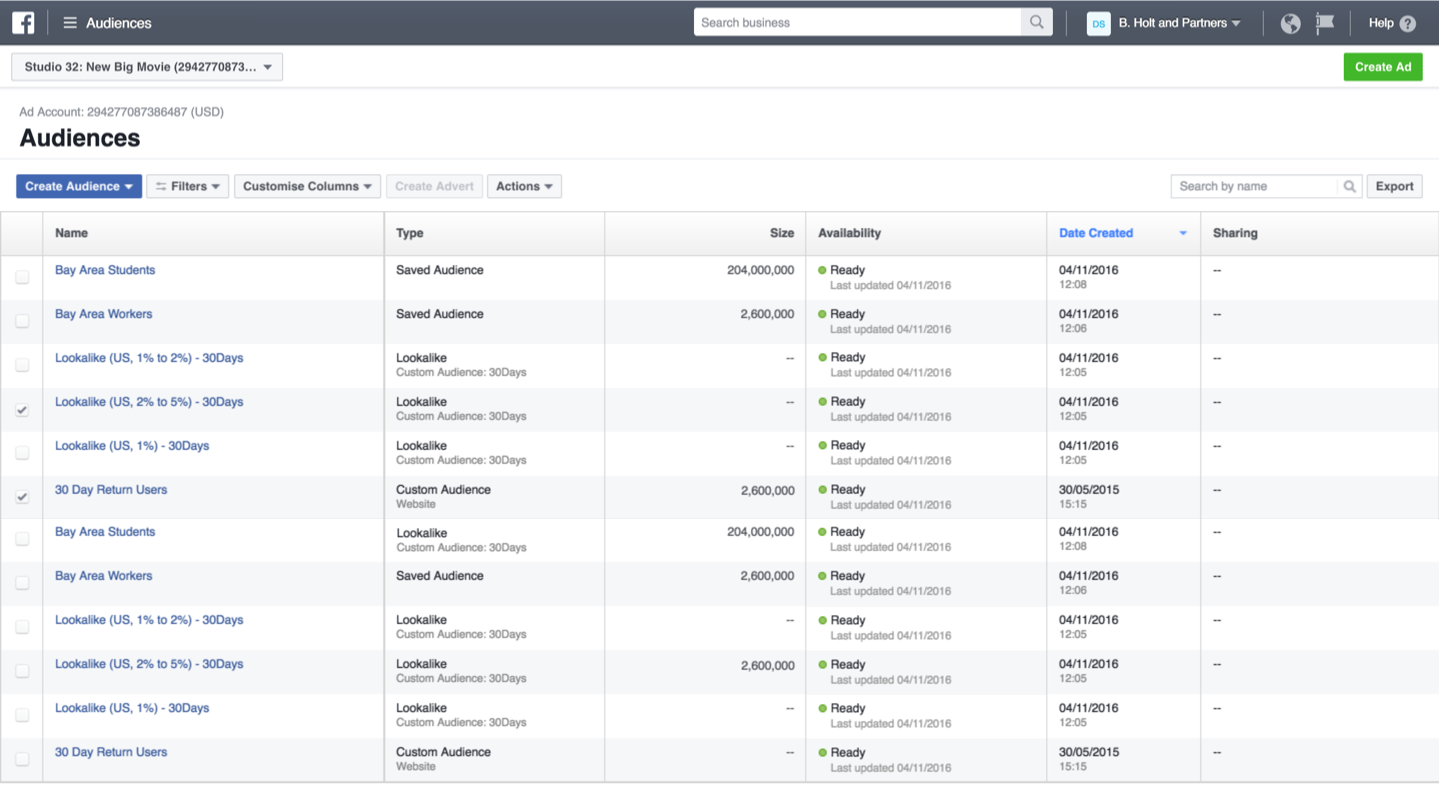
Who should create a Facebook Business Manager account?
While a solo entrepreneur managing their own social presence could operate without it, you absolutely need Facebook Business Manager if any of the following are true:
- Your business has a team of people managing your marketing efforts and/or social media presence.
- You work with vendors or agencies who support you in running ads or managing your Page and you need to control their access without handing over asset ownership.
- You’re an agency managing multiple client Facebook Pages, Instagram Pages or ad accounts.
- You require granular access control over your Facebook Page and need the ability to easily add or revoke permissions.
Facebook Business Manager vs. Meta Business Suite vs. Meta Business Portfolio
Many users are confused about Meta’s naming conventions. The most important distinction is that Facebook Business Manager is a centralized platform for managing assets (Pages, ad accounts) and user permissions—it’s the backend. Meta Business Suite (and its newer iteration, Meta Business Portfolio) is the frontend interface used for daily social media management tasks like content publishing, basic analytics and community engagement.
Think of it this way:
- Business Manager (Backend): Controls who has access to what. It’s where you establish ownership and security.
- Meta Business Suite and Portfolio (Frontend): This is where you execute your daily work (posting, replying, checking notifications).
You need Business Manager to set up the foundational ownership and security structure. You use Business Suite/Portfolio for your daily content and engagement tasks.
Get started with Facebook Business Manager
The setup process is straightforward. Follow these steps to establish your Business Manager command center:
Step 1. Set up your Business Manager account
At this point, we’re assuming you already set up a Facebook business Page. If you haven’t, do that first.
Go to the Facebook Business Manager page and click on “Create Account.”

Fill out the form with your business name, your name and your business email address. Then click Next.

Enter your business address, phone number and website. Click Submit.
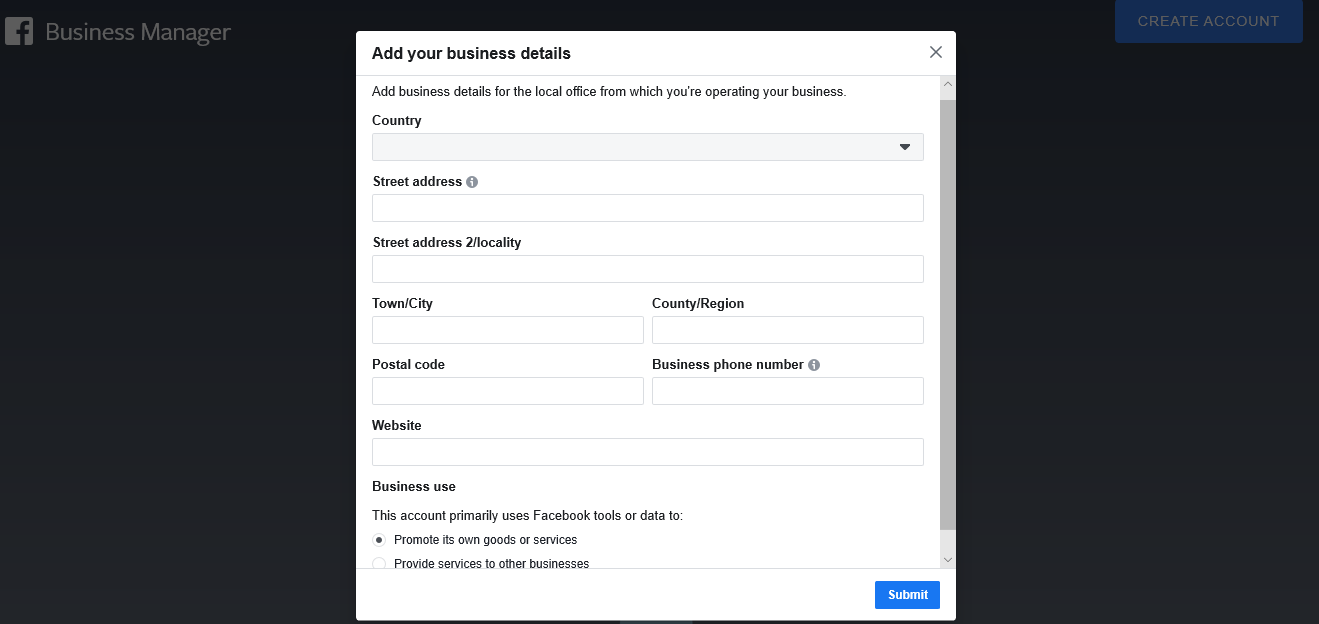
Finally, you’ll receive a confirmation email. Click Confirm Now in that email. Congratulations! You now have a Facebook Business Manager account.
Step 2. Link your Facebook Page(s)
Next, link your Business Manager account with all the Facebook and Instagram Pages you manage. On your dashboard, you have the option to either Add Page or Create Page.

To link an existing Page, click Add Page and enter the Page name or URL. If you’re an admin of the Page, Facebook will automatically approve the link request.
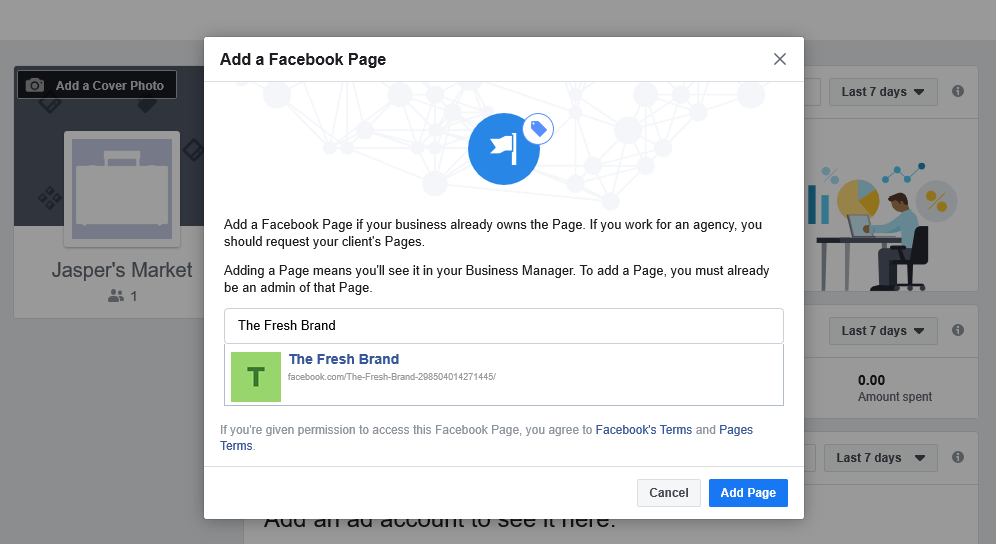
For agencies that don’t own their clients’ business assets, linking a Page requires sending a request. In Business Settings, find Pages under Accounts, click Add, then select Request Access to a Page.

Once you’ve linked your Pages, you’ll track all your posts and their performance metrics in one place. This includes metrics like Facebook reach and clicks so you know how your efforts are paying off.

Step 3. Link your ad account
To run ads using Facebook Business Manager, link the ad account you’re managing. Like with Pages, you can automatically link an ad account that you own and are an admin of.
Click Add Ad Account to link your existing ad account and enter your ad account ID. If you don’t have one yet, you have the option to create a new ad account.
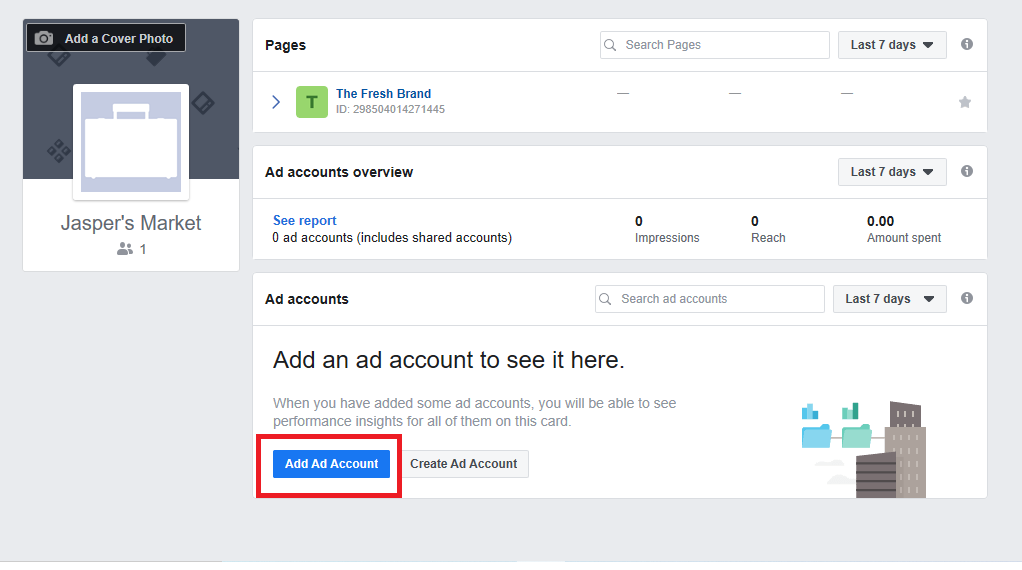
Similar to requesting access to a Page, agencies request access to a Facebook Ad account the same way: Under Ad Accounts, click Add and Request access to an ad account.
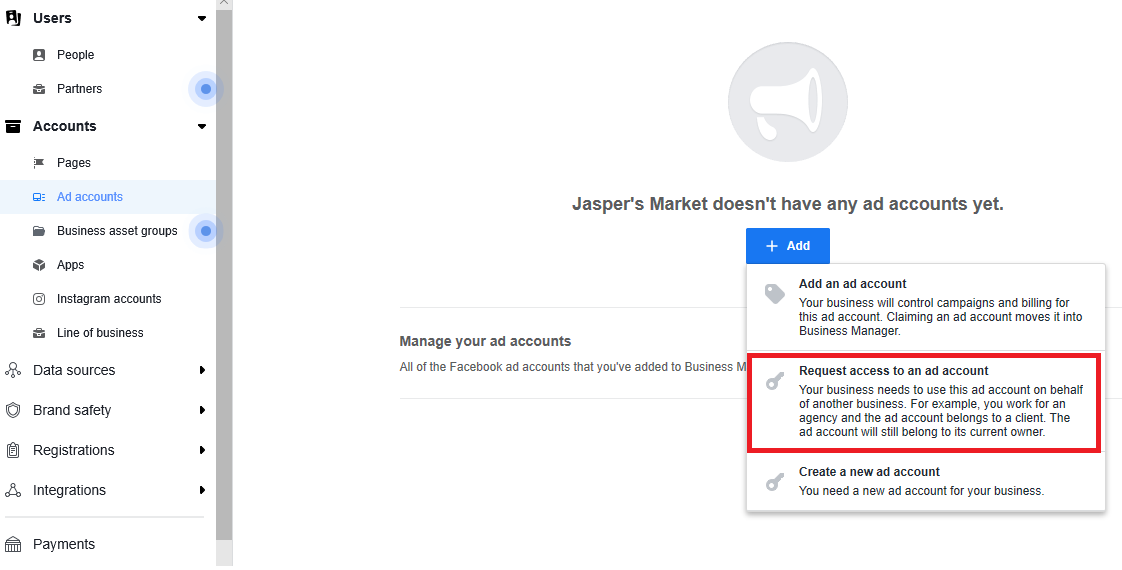
Step 4. Add users to your Business Manager account
For businesses and agencies alike, one of the most crucial steps is learning how to add people to your Business Manager account. In your Business Settings, under People, click Add.
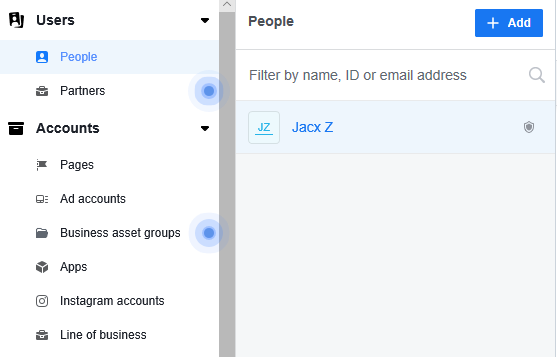
Enter the email addresses of the people you want to share access with. You’ll have the option to assign them a business role, whether you want to give them admin access or limit them to employee access.
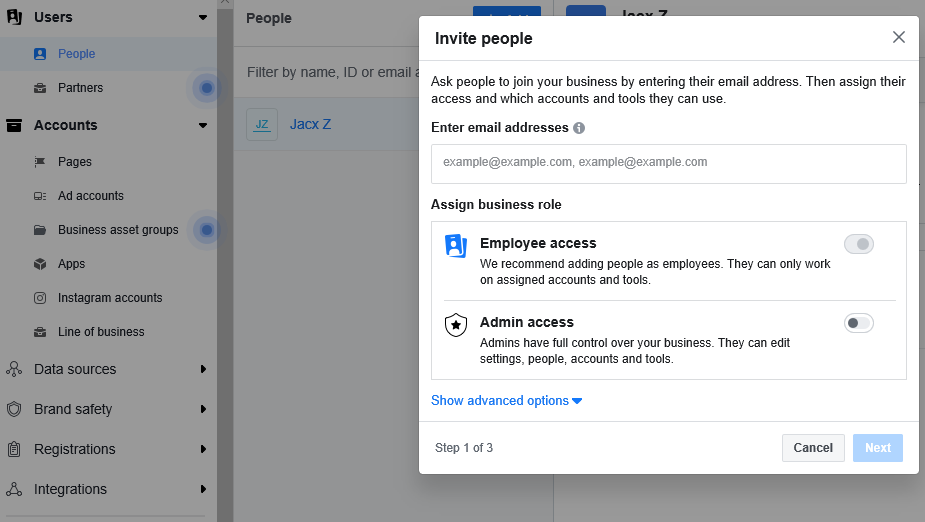
When you give someone employee access, you get to choose which accounts and tools they have access to. This is perfect for agencies that need to delegate accounts, tasks and projects to different team members.
Note on Troubleshooting: We often see users who face problems with the Instagram “Page Owner” accounts. This usually happens because these users don’t have admin access on the Facebook Business Manager account that owns the Page.
Adding Partners: If you work with a vendor or agency, you’ll need to add them as a Partner. In your Business Settings, go to Partners and add a partner to share your business assets with. This gives them access to the account assets while you maintain ownership.
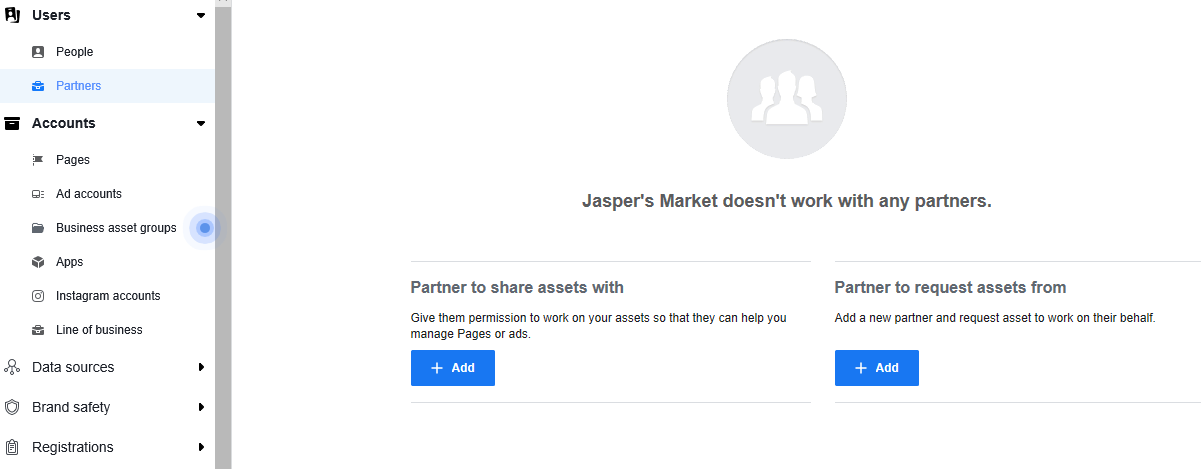
Tips to make the most of Facebook Business Manager
Once you’ve completed setup, you’ll use Facebook Business Manager to track all your Pages and ads. Beyond these basic tasks, here’s how you can make the most of it:
1. Increase your account security
Facebook Business Manager lets you add an extra layer of protection for your business assets. Set up two-factor authentication for your account in your Business Settings under Security Center. This is a critical step in modern security protocols.
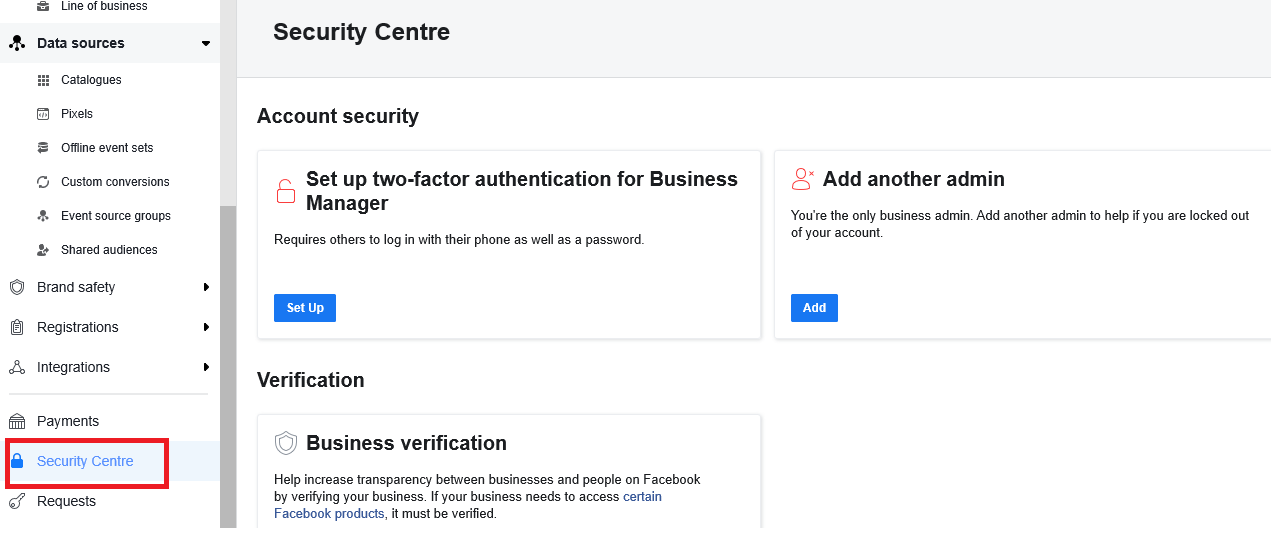
2. Set up Facebook Pixels
To effectively collect information that’ll feed your Facebook marketing strategy and ad campaigns, set up Facebook Pixels right away. In your Business Settings, go to Data Sources and find Pixels.
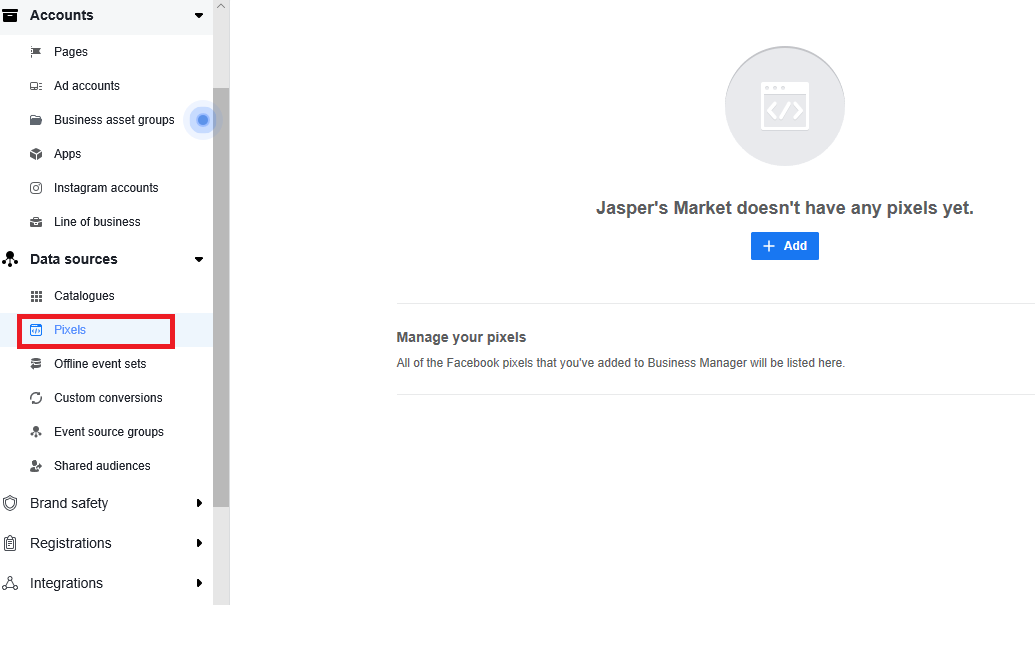
You only need to name your Pixel here, but you also have the option to add your website URL to discover easy setup options. Select Set up Pixel now and follow the installation instructions in our Facebook ad targeting guide.
3. Set up Locations using Business Manager
If your business has multiple locations, setting up Locations will allow customers to find the most relevant store Pages through search engines.
Click on the Business Manager button at the top of the page and select Shop locations under Assets.

Click Add stores, then select Add manually to fill out the necessary details about your store. Facebook also recommends using a spreadsheet if you need to add more than 10 shops.
Common Facebook Business Manager troubleshooting
What prevents me from claiming a Facebook Page?
If you get an error when trying to add a Page, another Business Manager account already owns it. Ask the current owner to either release the Page or add your business as a Partner.
What do I do about permission errors?
Permission errors are frequent when you have access to an asset but not the ad account associated with it. Ensure you’re assigned to both the Page and the ad account with the correct role-based permissions.
How do I get access to a client’s account?
Never ask a client to make you an admin of their Page directly. Use the Request Access feature in your own Business Manager to keep ownership well-defined.
Take your Facebook management to the next level
Setting up Facebook Business Manager is the foundational step to securing and organizing your brand’s assets. You’ve successfully built the command center. Now it’s time to launch your strategy for maximum impact.
While Business Manager is essential for permissions and backend organization, a comprehensive social media management platform transforms how you execute your work. Sprout Social integrates directly with your Facebook assets, enabling you to streamline publishing with Optimal Send Times , engage with your community faster, and measure performance with deep analytics that prove your impact. This level of AI-powered excellence and ability to amplify growth is what truly sets Sprout apart.
You’ve mastered the setup. Now, see how the right tools accelerate your results. Explore how Sprout elevates your Facebook strategy by starting a free trial today.
FAQs about Facebook Business Manager
What's the difference between Facebook Business Manager and Meta Business Suite?
Facebook Business Manager is a backend tool for managing assets (Pages, ad accounts) and user permissions. Meta Business Suite is a frontend tool for daily tasks like posting content, replying to messages and viewing basic analytics.
What is the Meta Business Portfolio?
The Meta Business Portfolio is the latest iteration of Meta Business Suite and functions as the primary hub for managing all your linked assets. It essentially replaces the day-to-day management functions of the older Business Suite.
Do I need Business Manager to run Facebook ads?
Although ads run from a personal ad account, using Business Manager is the best practice. It separates your business and personal activity, improves security and allows for team collaboration on ad campaigns.
What happens to my Pages if I delete my Business Manager account?
Deleting your Business Manager is a permanent action that will also remove all associated assets, including Pages and ad accounts that it owns. Before deleting, you must transfer ownership of these assets to another person or Business Manager.
Do I need more than a personal Facebook account to use Business Manager?
You need a personal Facebook account to create Business Manager, but the platform separates your business and personal activities completely. This is one of its key benefits.
Is there a limit to how many people I add to Business Manager?
Business Manager supports unlimited users, but each person needs their own Facebook account to receive access. This ensures security and accountability across your team.

Share